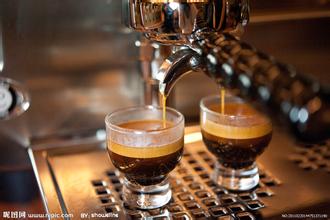Coffee blending introduction: using 2 or 6 kinds of coffee beans to match? what will be the taste after blending?
Since it is a blending, it naturally refers to the blending of more than two kinds of raw beans, but a special example is that it can also match the same kind of coffee beans with different roasting degrees, or even the new crop and aged coffee or old crop of the same kind of coffee beans, so the type referred to in the blending is no longer a coffee variety in a narrow sense, but extends to the flavor of coffee in a broad sense. Generally use 2 to 6 kinds of coffee beans when blending, too many kinds will not be able to show the unique flavor of coffee.
Blended coffee usually does not take the 1:1 blending ratio, because this may suppress each other's unique flavor, so the blending must be primary and secondary in order to produce a better taste than a single coffee. If you want the coffee to taste complex and changeable, you can reduce the proportion of raw beans, and vice versa.
Coffee blending depends on constant attempts, so a blending schedule should be drawn up mathematically before blending, and then the best plan should be determined through the process of blending-tasting cups.

Important Notice :
前街咖啡 FrontStreet Coffee has moved to new addredd:
FrontStreet Coffee Address: 315,Donghua East Road,GuangZhou
Tel:020 38364473
- Prev

The three main coffee producing areas of Brazil, Minas Gerais (Minas Gerais) and Sao Paulo
Brazil (Brazil) aroma 3 minutes brightness 3.5 minutes mellow flavor 4 minutes aftertaste 4 points suitable for baking: City/Full city/Espresso used as Espressode beans should not be baked too deep, because the producing area is low altitude, the bean density is low, the pot under deep baking produces coke bitterness, it is best to start the pot before the second explosion. As for high-end Brazilian beans, they can be baked more widely.
- Next

Is there any change in the mixed coffee besides the change of flavor?
The same is true of coffee, the single product is relatively shallow and not so bitter. When you drink Colombian coffee at first, you will be fascinated by its smoothness and sweetness; when you drink Ethiopian coffee, it will linger with its unique flavor of strawberries, blackberries, chocolate or orange. But when you drink it, you want to try something else. In the end, you drink it again and again, and you just want to spell it in several ways.
Related
- Does Rose Summer choose Blue, Green or Red? Detailed explanation of Rose Summer Coffee plots and Classification in Panamanian Jade Manor
- What is the difference between the origin, producing area, processing plant, cooperative and manor of coffee beans?
- How fine does the espresso powder fit? how to grind the espresso?
- Sca coffee roasting degree color card coffee roasting degree 8 roasting color values what do you mean?
- The practice of lattes: how to make lattes at home
- Introduction to Indonesian Fine Coffee beans-- Java Coffee producing area of Indonesian Arabica Coffee
- How much will the flavor of light and medium roasted rose summer be expressed? What baking level is rose summer suitable for?
- Introduction to the characteristics of washing, sun-drying or wet-planing coffee commonly used in Mantenin, Indonesia
- Price characteristics of Arabica Coffee Bean Starbucks introduction to Manning Coffee Bean Taste producing area Variety Manor
- What is the authentic Yega flavor? What are the flavor characteristics of the really excellent Yejasuffi coffee beans?

